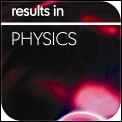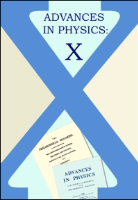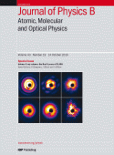
QUANTUM INFORMATION & COMPUTATION
Scope & Guideline
Connecting Minds in Quantum Information and Computing
Introduction
Aims and Scopes
- Quantum Algorithms and Complexity:
The journal publishes research on the design and analysis of quantum algorithms, exploring their computational complexity and efficiency compared to classical counterparts. - Quantum Communication and Cryptography:
Research in this area includes protocols for secure communication, quantum key distribution, and the study of quantum channels and their properties. - Quantum Computing Theory and Foundations:
Papers often focus on the theoretical underpinnings of quantum mechanics as they relate to computation, including quantum states, entanglement, and non-locality. - Quantum Machine Learning and Data Processing:
This scope includes studies on integrating quantum computing with machine learning techniques, exploring how quantum methods can improve data analysis and processing. - Quantum Control and Dynamics:
Research on controlling quantum systems and understanding their dynamics under various conditions is a significant focus, including noise analysis and fault tolerance. - Quantum Information Theory:
This includes the study of quantum states, entropy, and measures of quantum information, along with their implications for quantum computing and communication.
Trending and Emerging
- Quantum Software Development:
Recent publications highlight the development of software tools and frameworks specifically designed for quantum computing, addressing the need for practical applications and user-friendly interfaces. - Quantum Machine Learning:
There is a growing trend in exploring the intersection of quantum computing and machine learning, with researchers investigating how quantum algorithms can enhance learning processes. - Quantum Security Protocols:
A significant increase in research on quantum cryptography and secure communication protocols underlines the importance of safeguarding information in a quantum context. - Hybrid Quantum-Classical Systems:
Emerging interest in systems that combine quantum and classical computing paradigms reflects the practical challenges of current quantum technology and the need for integration. - Quantum Error Correction and Fault Tolerance:
As quantum technologies advance, research focusing on error correction techniques and strategies for achieving fault tolerance in quantum systems has become increasingly critical.
Declining or Waning
- Classical Simulation of Quantum Systems:
There seems to be a decreasing number of papers addressing classical algorithms for simulating quantum systems, possibly due to the shifting focus towards more practical quantum computing applications. - Basic Quantum Mechanics Principles:
Research that strictly adheres to foundational aspects of quantum mechanics without direct relevance to computation or information processing appears to be declining. - Quantum Teleportation Techniques:
Although still an important concept, specific techniques and studies on quantum teleportation have seen a reduction in frequency, as the focus shifts to more practical applications of quantum technologies.
Similar Journals

Advanced Quantum Technologies
Exploring the Frontiers of Quantum InnovationAdvanced Quantum Technologies is a leading journal published by WILEY, specializing in the rapidly evolving fields of quantum mechanics and technology. With an impact factor reflecting its rigorous peer-review process and high-quality research, this journal aims to disseminate the latest advancements across multiple disciplines, including Computational Theory and Mathematics, Condensed Matter Physics, and Electrical and Electronic Engineering. Since its inception in 2018, it has garnered a prominent reputation, as evidenced by its Q1 ranking in several categories for 2023 and its high percentiles in Scopus rankings, showcasing its significant contributions to the academic community. Researchers and professionals alike will find valuable insights within its pages, promoting innovations that bridge theoretical frameworks and practical applications. Although currently not an Open Access journal, Advanced Quantum Technologies continues to strive for excellence, ensuring that its content is accessible and impactful to those who are shaping the future of quantum technologies.

Quantum Information Processing
Empowering innovation in quantum information science.Quantum Information Processing, published by Springer, stands as a pivotal journal within the rapidly evolving field of quantum computing and information science. With an ISSN of 1570-0755 and an E-ISSN of 1573-1332, this journal has been a vital resource since its inception in 2004 and is set to continue contributing until 2024. Ranked in Q2 for Electrical and Electronic Engineering, Electronic, Optical and Magnetic Materials, and various other categories, its high visibility in academic circles is reinforced by its Scopus rankings, showcasing its integral role in advancing theoretical and practical aspects of quantum technologies. Although it operates under a subscription model, Quantum Information Processing prioritizes accessibility to groundbreaking research that covers a wide spectrum of topics, including quantum algorithms, quantum cryptography, and quantum error correction, making it essential reading for researchers, professionals, and students alike. As the field grows, the journal remains committed to fostering innovation and collaboration among scholars, ensuring its position as an influential platform for sharing pivotal advancements in quantum information theory and applications.

Results in Physics
Pioneering Discoveries in the World of PhysicsResults in Physics, an esteemed open-access journal published by ELSEVIER, has been a prominent platform for disseminating cutting-edge research in the field of physics since its establishment in 2011. With its ISSN 2211-3797 and E-ISSN 2211-3797, this journal proudly holds a Q2 ranking in the Physics and Astronomy category for 2023, showcasing its significance and quality within the scientific community. With a remarkable Scopus rank of #28 out of 243 in the general physics and astronomy domain, placing it within the 88th percentile, Results in Physics serves as a vital resource for researchers, professionals, and students alike, fostering a collaborative environment for the advancement of knowledge across various subfields. The journal aims to provide a rapid and unrestricted access to innovative findings, encouraging open scientific dialogue and enhancing the visibility of breakthrough research. Located in the Netherlands at RADARWEG 29, 1043 NX AMSTERDAM, Results in Physics continues to uphold its commitment to excellence and accessibility in the ever-evolving landscape of physics research.

Advances in Physics-X
Elevating Research Standards in Physics and AstronomyAdvances in Physics-X is a premier open-access journal published by Taylor & Francis Ltd, dedicated to advancing the frontiers of knowledge in the field of Physics and Astronomy. Since its inception in 2016, the journal has established itself as a vital platform for researchers and professionals, showcasing innovative research and cutting-edge theories that influence a broad array of sub-disciplines within physics. With an impressive impact factor and ranked in the 94th percentile among its peers, it resides in the Q1 category for Physics and Astronomy (miscellaneous), indicating its significant contributions to the academic community. Located in the United Kingdom, the journal encourages open access to foster wider dissemination and visibility of scholarly works, aligning with contemporary academic trends that prioritize global knowledge sharing. The ongoing commitment to publishing high-quality research ensures that Advances in Physics-X remains an essential resource for students, industry experts, and academics alike, helping to shape the future of physics research through collaboration and innovation.

AVS Quantum Science
Unlocking the Mysteries of Quantum ScienceAVS Quantum Science, published by AIP Publishing, is a premier open-access journal dedicated to the interdisciplinary realm of quantum science, encompassing advancements in atomic and molecular physics, computational theory, and materials science. With an impressive array of contributions from researchers worldwide, this journal has achieved a remarkable status in the academic community, proudly holding a Q1 category ranking across multiple fields including Condensed Matter Physics and Electrical and Electronic Engineering as of 2023. As an essential resource for scholars, practitioners, and students, AVS Quantum Science emphasizes the critical importance of quantum phenomena in shaping future technologies and methodologies. The journal's commitment to rigorous peer review and dissemination of groundbreaking research serves as a pivotal platform for innovation, revealing new insights and fostering collaboration in the evolving landscape of quantum science.

JOURNAL OF PHYSICS B-ATOMIC MOLECULAR AND OPTICAL PHYSICS
Exploring the Frontiers of Atomic and Molecular PhysicsJOURNAL OF PHYSICS B-ATOMIC MOLECULAR AND OPTICAL PHYSICS, published by IOP Publishing Ltd, stands as a key platform within the fields of atomic, molecular, and optical physics. With an impressive history spanning from 1988 to 2024, this journal is recognized for its high-quality research contributions, holding a Q2 ranking in both Atomic and Molecular Physics and Optics, and Condensed Matter Physics, as of 2023. While not an open-access journal, it continues to attract a broad readership and submissions due to its commitment to disseminating knowledge that is at the forefront of contemporary physics research. The journal's ISSN 0953-4075 and E-ISSN 1361-6455 signal its accessibility and relevance in academic discourse. As researchers, professionals, and students delve into the intricate phenomena of quantum mechanics and photonics, they will find pivotal studies and insights within these pages, reinforcing JOURNAL OF PHYSICS B's stature as an esteemed resource in the ever-evolving landscape of physics.

ACM Transactions on Quantum Computing
Transforming Ideas into Quantum RealitiesACM Transactions on Quantum Computing (ISSN: 2643-6809, E-ISSN: 2643-6817), published by the Association for Computing Machinery, is a leading journal dedicated to advancing the field of quantum computing. With a focus on innovative research and applications, this journal serves as a prime venue for disseminating significant findings in quantum algorithms, quantum information theory, and quantum hardware. As a reflection of its quality and impact, the journal is highly ranked in several categories, including #8 in Physics and Astronomy and #18 in Computer Science according to Scopus metrics. The journal's scope encompasses groundbreaking research from 2020 to 2024, making it an essential resource for researchers, professionals, and students aiming to stay at the forefront of quantum computing advancements. Although it follows a traditional publishing model without an Open Access option, contributors can be assured of wide visibility and recognition in this rapidly evolving field. Explore cutting-edge topics and contribute to the ongoing discourse in quantum computing with ACM Transactions on Quantum Computing.

INTERNATIONAL JOURNAL OF THEORETICAL PHYSICS
Advancing Knowledge in Mathematics and PhysicsInternational Journal of Theoretical Physics is a premier academic journal dedicated to the advancement of knowledge in the fields of theoretical physics and mathematics. Published by Springer/Plenum Publishers, this esteemed journal has been a vital platform for researchers since its inception in 1968. With an impressive track record and an emphasis on high-quality, innovative research, the journal currently ranks in the third quartile (Q3) in both the Mathematics (Miscellaneous) and Physics and Astronomy (Miscellaneous) categories as of 2023. While the journal is not open access, it offers accessible subscription options for institutions and individuals. The International Journal of Theoretical Physics serves as an essential resource for scholars and practitioners looking to deepen their understanding and contribute to the evolving landscape of theoretical research, making it a key player in nurturing academic discourse and fostering collaboration in its field.

Physical Review Research
Connecting minds through groundbreaking research.Physical Review Research, published by the American Physical Society, is a premier open access journal dedicated to the dissemination of high-quality research across all areas of physics and astronomy. Since its inception in 2019, this journal has quickly established itself as a vital platform for researchers, achieving a prestigious Q1 ranking in the dynamics of Physics and Astronomy (miscellaneous) and holding a commendable position in the Scopus Rankings with a rank of #29 out of 243, placing it in the 88th percentile. With the commitment to fostering scientific collaboration and transparency, Physical Review Research offers unrestricted access to valuable findings, enabling researchers, professionals, and students alike to engage with cutting-edge contributions in general physics and astronomy. As it converges into its forthcoming years of publication, the journal remains dedicated to showcasing rigorous research and innovative ideas that drive the field forward.

Quantum Studies-Mathematics and Foundations
Innovating the discourse in quantum mechanics.Quantum Studies-Mathematics and Foundations, published by SPRINGER, is an esteemed academic journal dedicated to advancing the field of quantum theories by providing a platform for the intersection of mathematics, physics, and foundational principles. Established in 2014, the journal has garnered a respectable impact factor within the academic community, reflective of its commitment to quality research, acknowledged in its Q3 ranking in both Atomic and Molecular Physics and Mathematical Physics for 2023. With a focus on groundbreaking studies that explore the subtleties of quantum mechanics and its mathematical underpinnings, the journal aims to foster innovative research and contribute to the discourse among researchers, professionals, and students alike. Although the journal operates on a non-open access model, it provides invaluable insights that bridge theoretical frameworks with practical applications in the quantum realm. The journal is located in a prime academic hub in Switzerland, making it a significant contributor to the global dialogue in physics and mathematics.